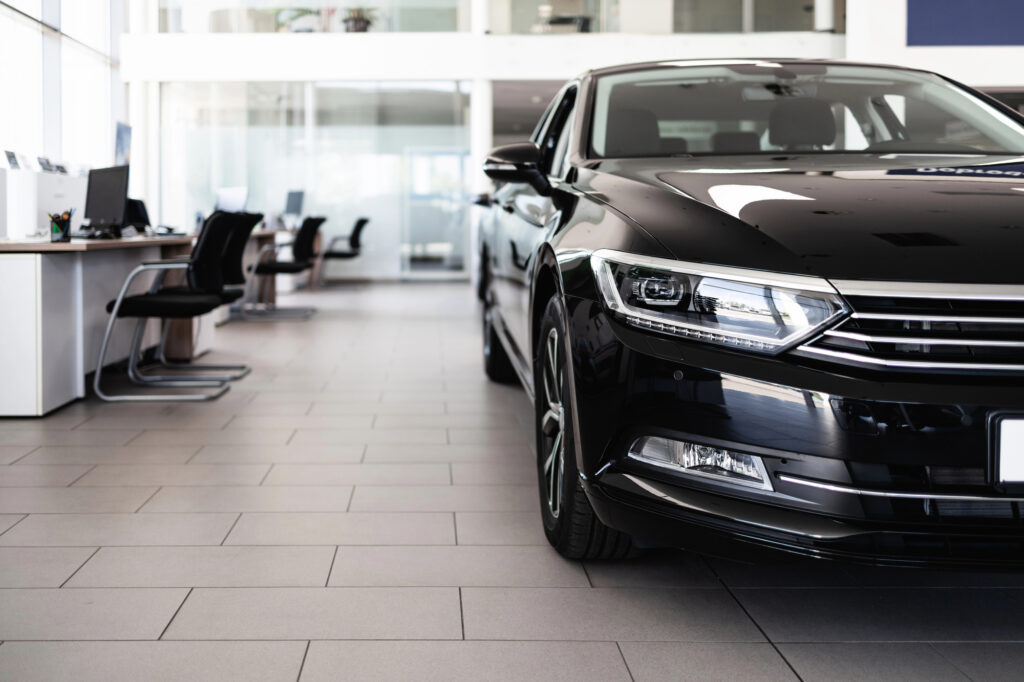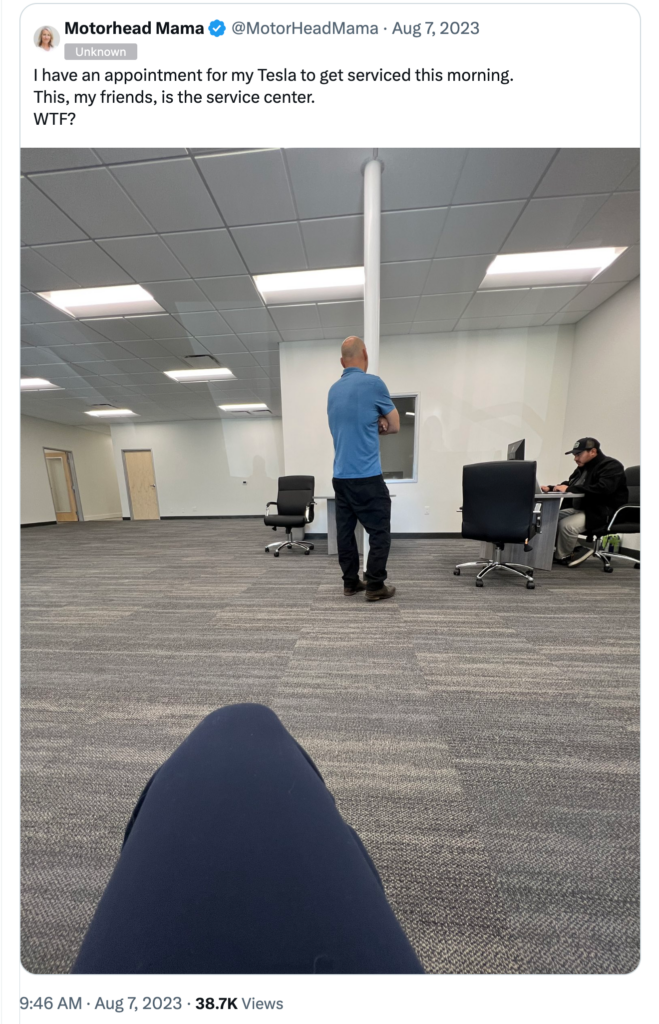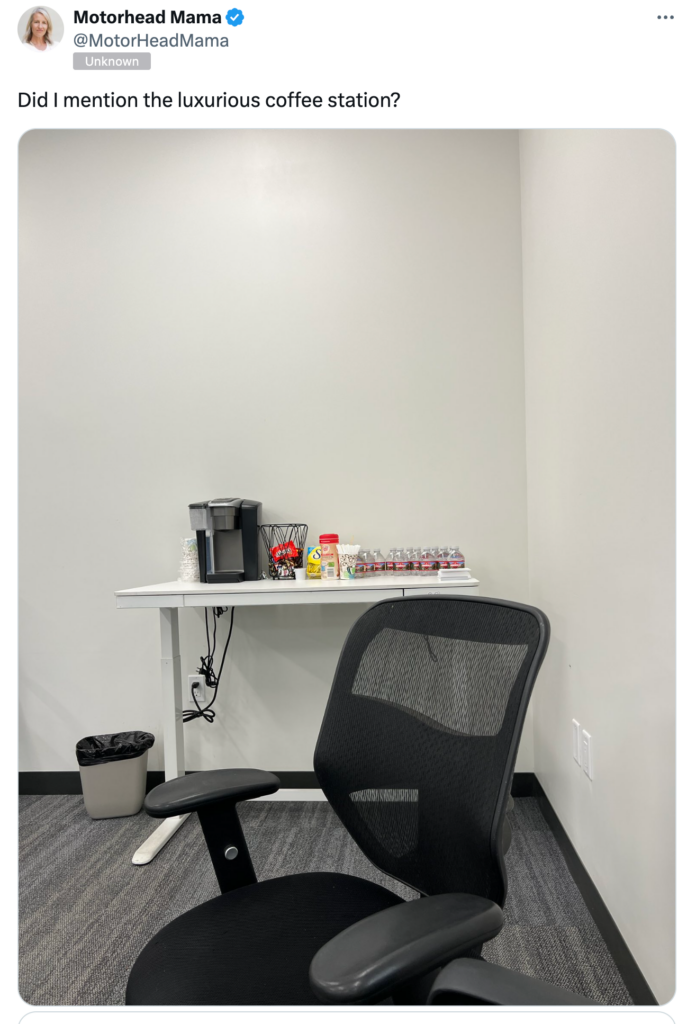 I am an observer. I like to explore and examine certain trends and follow my instincts where they take me. When I was a CFO at dealerships, this kept the organization one or more steps ahead of the competition. I’m still practicing it and writing posts like this to share what I learn.
I am an observer. I like to explore and examine certain trends and follow my instincts where they take me. When I was a CFO at dealerships, this kept the organization one or more steps ahead of the competition. I’m still practicing it and writing posts like this to share what I learn.
I believe the “digital only” model of selling cars has hit its peak.
Now, that’s not to say that we’re going back to before the Internet to conduct only in-person transactions. What I am saying is the “bricks and clicks” approach (the integration of physical stores and digital dealerships) continues to be preferred by car buyers. Of course, each retailer will determine what that means for their specific market area but it’s nice to know that all the operational adjustments of the last several years have given retailers a proven operating model.
During the pandemic, there was an accelerated urgency to go purely digital. But now that we are beyond the shock and subsequent scrambling to find a workable way to sell cars, with inventories settling and demand at nearly normal levels, I think it’s safe to say there’s been an evolution of sorts. Dealers met the challenge during an unprecedented time and are now in an even stronger position to prevail against disrupters.
Controlling expenses is the #1 concern for dealers. Get your FREE DEALER SELF-ASSESSMENT to see how you measure up against manufacturer-specific benchmarks. Get it today!
The rate of change is always slower than most people think.
I was listening to a great NADA podcast episode featuring Glenn Mercer, automotive researcher and industry futurist, where he discusses the challenge of EV adoption and the future of the retail side of the industry. He said that dealers have and will continue to evolve but the rate or change will be slower than most people think.
That’s a welcome thought because, like a lot of us who are from retail and have lots of friends and colleagues who serve retail, it seems that the past 5-7 years have been going at a thousand miles per hour without the proven systems or strategy we were accustomed to that ensured franchise dealership model remained intact and competitive.
Dealers still play an enormous role.
As I mentioned earlier, I am an observer. I came upon this moment in time last August. I think it shows the utter disregard of customer experience acumen that you would generally never see at at franchise car dealership:
Tesla owners are very vocal about their experiences on various owner forums. This one entry on the Cybertruck forum is quite incredible.
This article: Cybertruck Teething Issues Have Tesla Owners Calling Tow Trucks says that some owners report that their problems are fixed fairly quickly while others are upset that their truck is estimated to spend more than a month in the shop while it waits on a part from Tesla’s Austin Gigafactory or diagnosis from special Cybertruck-specific techs.
Having observed a large sum of situations similar to these, and the countless other real-time sharing of new vehicle delivery debacles that would literally send shivers down your spine, it’s safe to say that franchise dealers not only still play an outsized role in the retail experience, they are the masters of it and it’s a huge competitive advantage.
Customers just want to know that there’s someone there to help them when they need it.
There’s a colloquial expression: “I want to know whose neck to wring.”
We’ve heard a lot of takes about the value of physical stores for over the last decade, from one extreme to another and everywhere in between. I believe the evolution that we’re seeing now is evidence that the debate is over. “Bricks and clicks” (the integration of physical stores and digital dealerships) is now the optimal retail model.
The younger demographic may be more inclined towards a digitally enhanced car buying experience, however, they still value physical touchpoints and prefer to gather information and make decisions based on a combination of digital and physical channels.
The stats show that all car buyers prefer a combination of digital and physical channels, and when customers need a human to help them, they’re simply an email, phone call or text away. When it’s time to service their car, they again want a human to help them (not an app).
Majority of consumers agree that going to a dealership is a positive experience.
Wards Auto recently interviewed Cox Automotive President Stephen Rowley:
Rowley: “Our latest survey, 79% of customers had a positive experience at the dealership and valued it. So, when you add technology and personalization to the process, it enhances the experience.”
WardsAuto: “It didn’t used to be 79%; it was a lot lower. Why do you suppose dealer satisfaction ratings went up as they have? Did the internet have anything to do with it, or did dealers get better at what they do?”
Rowley: “It’s a great question, and we spend a lot of time on it. Of late, dealers have done a better job with inventory and availability of cars. Also, online has become pervasive, allowing people to see prices they want to see, and match up with those prices when they go to the dealer. If I know what I want, and the dealer knows, it makes for a more harmonious relationship that starts midfield.”
Online retailers, like Carvana and Vroom, were trailblazers poised to change how Americans bought cars. During the pandemic, their sales and stock prices took off like a rocket. In response, publicly traded auto retailers like Lithia and AutoNation developed their own online retailing experiences. Despite the massive investments and efforts to support online transactions, which some consumers appreciate, the most recent Cox Automotive Car Buyer Journey report shows that 93% of consumers purchased vehicles inside showrooms, and most are happy with their “old school” showroom experience.
- In January, online retailer Vroom announced they were winding down operations.
- In October 2023, online retailer Shift Technologies suffered the same fate.
- Fisker is in deep trouble with its stock delisted, while it was discovered that there was an irregular accounting of customer deposits.
These are more examples of the industry’s gravitational forces pulling things back toward historical norms.
Here’s what is perhaps the greatest reason why the dealership franchise model is here to stay.
In a perfect world, where every car is always something buyers want, the strictly-online sales model works. But if you’ve been in the industry for a length of time, you know that not all cars have buyers that want them.
When demand is greater than supply, you can sell anyway you want (like in the case of a coveted Ferrari). But with the traditional brands, the vehicles that are driven by the average consumer, demand fluctuates and here is where dealers are the dominant solution.
Dealers offer a concierge-like service where they work with every buyer to provide what a customer needs, and sometimes what the customer doesn’t even know they need, but is grateful for the help. Every single day, dealers and their staff say, “I believe I know what you might like, here’s why.” They walk the customer though a complex process sharing insights about the model, colors, options, down pmt, financing, etc. and they move the metal.
Dealers are the value in getting the car sold.
There are times when a manufacturer produces a model that’s not very popular. Again, if you’re from retail, you know this all too well. It can effect your allocation, flooring interest, valuable space on the lot, the dealership’s profit and even your own paycheck. The fact is that the cars that are not selling, still have to be sold so that they can be replaced with other inventory that does sell.
There’s a certain kind of magic in having a dealer – an independent business person – facilitating the sales of those not-so-popular units. They are very motivated to move the metal and this is a very valuable service that the dealer provides to the manufacturer.
The DTC (Direct To Consumer) model has a big downside.
In the DTC model, they desire to control the customer experience. But because they don’t have dealers, they are unable to offer the customer-by-customer deal optimization such as incentives, financing deals and other creative sales stimulators.
In order to reach critical volume targets, all DTC can do is pull the giant lever of price (as Glenn mentions in the podcast). It’s extremely expensive and a crude way of selling cars. Glenn uses this example:
- If Tesla produces 100 model Y’s and only 95 are selling, to move the last 5, they cut $3000 off the price of the car and the other 95 buyers all get the same $3000 off. On the way up, when demand is strong, it’s great. But when supply starts to outstrip demand, you need a dealership system, which “puts butts in seats.”
The dealership franchise model evolution
At every NADA or other industry convention, a new shock appears. Dealers go into denial, then they get angry and then they adapt. This evolution is what has always made the car business exciting to me: You’re able to make changes today and see the results tomorrow.
The car industry is so vast and there’s a tendency to overstate the rate of change. The last few years have felt like being on an ever-increasing treadmill for me, but the car business’s fundamentals remain intact despite the never-ending wave of disrupters.
While evolution is likely to be constant, the fact remains that when manufacturers focus on building the best products that customers want, and their franchise dealers provide outstanding customer experience delivering those products, it’s a winning formula that withstands the test of time.
If you’ve gotten this far, you might like to get my latest business tips, exclusive content, and a bit of fun straight to your inbox with the Kruse Control Newsletter. Sign up now – it’s free!


